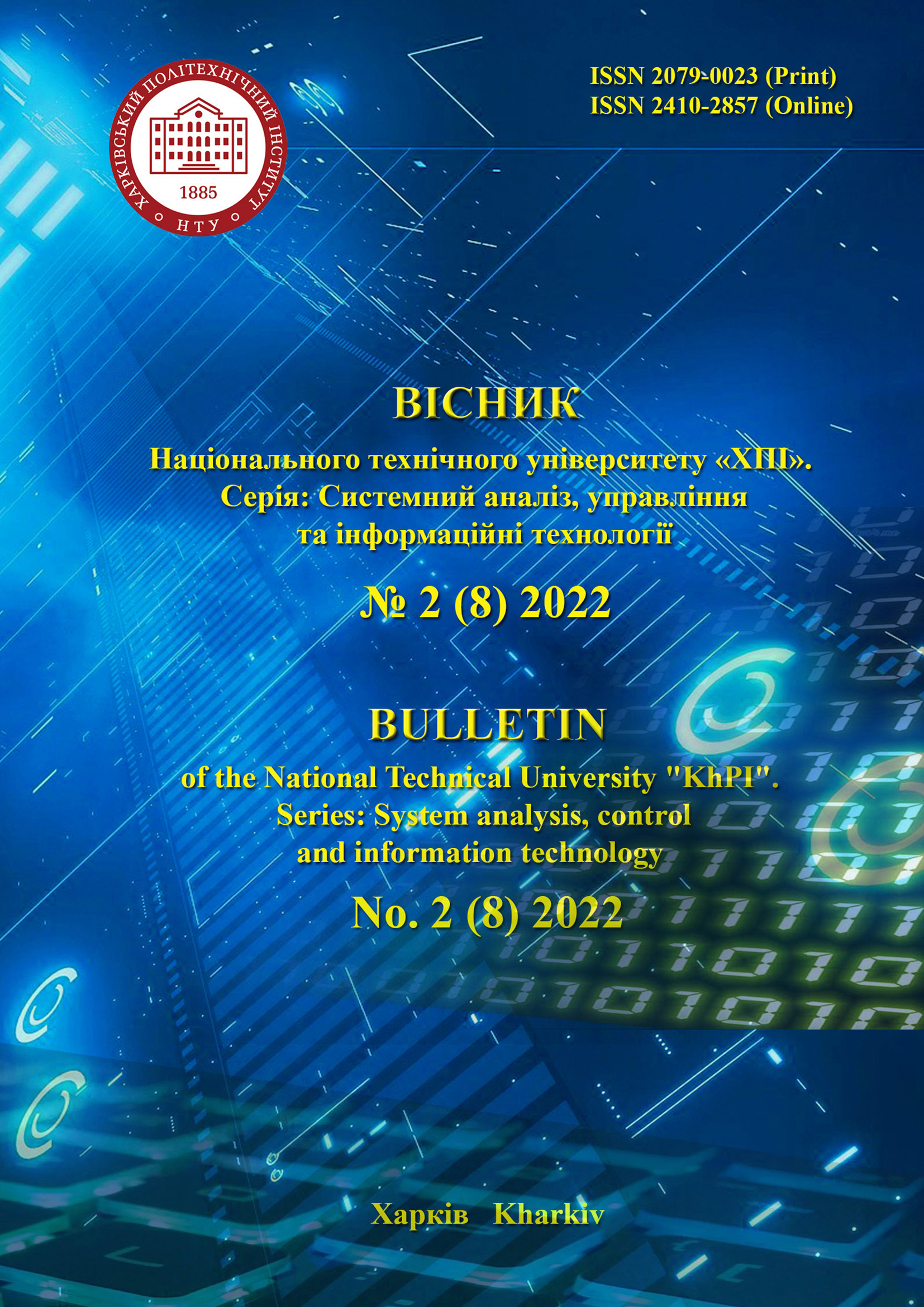EXAMPLE OF USE OF VIRTUAL PROMOTION MAP
DOI:
https://doi.org/10.20998/2079-0023.2022.02.11Keywords:
virtual promotion map, coordination, semantic kernelAbstract
The paper presents an example of using new technology to solve the problem of promoting goods and services according to the 7P concept. The technology was called virtual promotion. The reason for its occurrence is a decrease in the effectiveness of the currently classical search engine optimization methodology on the Internet. The task of the latter is to bring the given corporate WEB resource to the first place in the search server’s answers to the requests of potential buyers. Virtual promotion is based on two ideas. The first is based on marketing theory when to sell a product or service, you need to build a marketing channel. The second is that a search server is an intelligent machine. Then, to get the first position, we need to teach the virtual space, which consists of Internet nodes, to activate in such a way that the number of links to the WEB page with the desired product is maximum. To implement these ideas, two objects are synthesized as part of the virtual promotion: a semantic kernel and a promotion map. A semantic kernel is a description of a product or service or a training sequence of keywords. A map is a set of nodes on the Internet, where the semantic core should be placed to attract the maximum number of buyers of the product. The map is also a variant of marketing channels on the Internet. The paper considers an example of a situation where a semantic core and a minimal map have already been created using the classical approach (search optimization). In this case, the classic approach gave an increase in the number of visits to the WEB site, but there was not a single buyer of the product for six months. That is, the classical approach improved the key performance indicator, but it did not affect the sales performance in any way. The paper demonstrates how virtual promotion forms such a modification of the map that gives a given result in a given period. At the same time, it is not enough to synthesize a new map. It is necessary to apply a special mechanism for its implementation. For this purpose, the paper shows a real task of inter-functional coordination, which makes it possible to implement a promotion map. Real data for 2021, which was used to promote the product on the Ukrainian market, is given. The introduction of the new version of the map resulted in the first two orders within the first two weeks.
References
Orekhov S. Technology of Virtual Promotion of a Product. Computer Systems and Information Technologies. 2021, no. 3, pp. 52–58.
Orekhov S. Analysis of Virtual Promotion of a Product. Lecture Notes in Networks and Systems. 2022, no. 463, pp. 3–13.
Hodakov V. E., Sokolova N. А., Kiriychuk D. L. О razvitii osnov teorii koordinazii sloznuh sistem [On the development of the foundations of the theory of coordination of complex systems]. Problems of information technologies. 2014, no. 16, pp. 12–21.
Kuzenko А. S., Godlevsky I. М. Struktura modeli koordinazii organizazionnigi upravleniya territorialno raspredelennumi logisticheskimi systemami distribuzii [The structure of the coordination model of organizational management of geographically distributed logistics distribution systems] Vestnik Nats. tekhn. un-ta "KhPI": sb. nauch. tr. Temat. vyp.: Sistemnyy analiz, upravlenie i informatsionnye tekhnologii. [Bulletin of the National Technical University "KhPI": a collection of scientific papers. Thematic issue: System analysis, management and information technology]. Kharkov, NTU "KhPI" Publ., 2015, no. 58 (1167), pp. 1–6.
Lyashenko E. N., Kovalenko V. F., Kiriychuk D. L. Postanovka zadachi koordinazii v ierarhicheskoy sisteme upravleniya silami i sredstvami, privlekaemumi dlya likvidazii chrezvuchaynuh situaziy. [Statement of the problem of coordination in the hierarchical system of management of forces and means involved in the elimination of emergency situations]. Problems of information technologies, 2015, no. 18, pp. 46–51.
Godlevsky M., Orekhov S., Orekhova E. Theoretical Fundamentals of Search Engine Optimization Based on Machine Learning. CEUR WS. 2017, vol. 1844, pp. 23–32.
Ziakis C., Vlachopoulou M., Kyrkoudis T., Karagkiozidou M. Important Factors for Improving Google Search Rank. Future Internet. 2019, no. 11 (32), pp. 3–14.
Dasso A., Funes A. Verification, validation and Testing in Software Engineering. Idea Group Publishing, 2007. 443 p.
Lettnin D., Winterholer M. Embedded Software Verification and Debugging. Springer Science & Business Media, 2017. 220 p.
Kundu S., Lerner S., Gupta R.K. High-Level Verification. Methods and Tools for Verification of System-Level Designs. USA: Springer Science & Business Media, 2011. 182 p.
Kettinger W.J., Grover V. Business Process Change: Concepts, Methods and Technologies. Group Publishing, 1998. 704 p.
Mohapatra S. Business Process Reengineering. Automation Decision Points in Process Reengineering. USA: Springer Science & Business Media, 2013. 264 p.
Drucker P.F. The Effective Executive. The definitive guide to getting the right things done. HarperCollins Publishers Inc., 2017. 193 p.
Rise L., Traute Jr. Marketynhovi viiny [Marketing wars]. Kyiv, Fabula, 2019. 240 p.
Orekhov S., Malyhon H. Method for Synthesizing the Semantic Kernel of Web Content. CEUR-WS. 2022, vol. 3171, pp. 127–137.
Downloads
Published
How to Cite
Issue
Section
License
LicenseAuthors who publish with this journal agree to the following terms:
- Authors retain copyright and grant the journal right of first publication with the work simultaneously licensed under a Creative Commons Attribution License that allows others to share the work with an acknowledgement of the work's authorship and initial publication in this journal.
- Authors are able to enter into separate, additional contractual arrangements for the non-exclusive distribution of the journal's published version of the work (e.g., post it to an institutional repository or publish it in a book), with an acknowledgement of its initial publication in this journal.
- Authors are permitted and encouraged to post their work online (e.g., in institutional repositories or on their website) prior to and during the submission process, as it can lead to productive exchanges, as well as earlier and greater citation of published work (See The Effect of Open Access).


